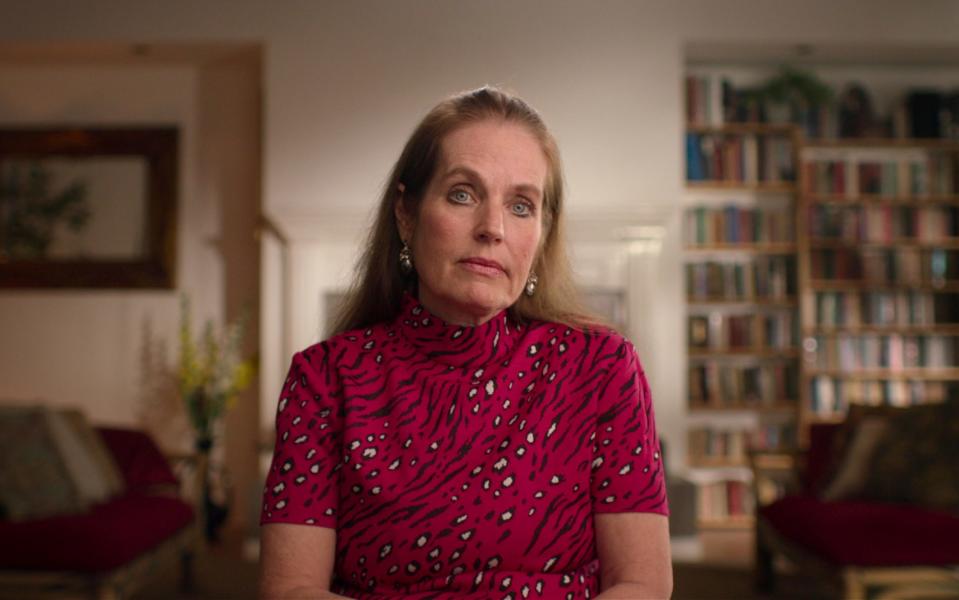The ‘Erin Brockovich of revenge porn’ on taking down The Most Hated Man on the Internet

- Oops!Something went wrong.Please try again later.
- Oops!Something went wrong.Please try again later.
In recent days Charlotte Laws has been hailed as a “hero”, a “force to be reckoned with” and a “f—ing gangster.” These messages of support are a world away from the unsolicited bile she received a decade ago, when she began her fight in the US against “the most hated man on the internet.” After Hunter Moore posted a topless picture of her daughter, Kayla, to his revenge porn website Is Anyone Up?, Laws spent two years gathering evidence from more than 40 of his victims - ultimately landing him a prison sentence.
A new Netflix documentary, The Most Hated Man on the Internet, explores Moore’s badge of honour as a “professional life ruiner” - and Laws’ bid to bring him down. She remembers being “shocked and freaked out” when a 24-year-old Kayla called her in tears in 2012, explaining that a topless photo she'd taken in private, and had never sent anyone, had appeared on the internet. Is Anyone Up? had been created by Moore two years earlier, encouraging users to post explicit pictures of former flames without their consent - and often including their names and addresses. Then 26, Moore was making $30,000 a month, he said, from pornography ads and merchandise. One month, the site received 30 million page views.
“I know that a topless picture can ruin someone’s life,” Laws, 62, says. Fearing that the images would scupper aspiring actress Kayla's job prospects for good, she started approaching lawyers. Nine of them. “Immediately, they all just threw up their hands and said ‘We don’t know anything about this.’” Revenge porn - at least from a legal standpoint - was a little-known quantity, with nothing in place to protect its victims.
Laws, who was a private eye in the Eighties (along with a colourful past as a debutante, a politician, a talk show host, and former girlfriend of Tom Jones) sent a request for the images to be removed based on the Digital Millennium Copyright Act, under which Kayla owned the rights to her pictures. But Moore wouldn’t play ball - with her, or the many other women who had asked for their ill-gotten photos to be wiped from the internet.
Kayla was distraught, worsening with each brick wall they hit. She was locking herself in her room, and refused to allow her mother to tell her husband, or her father (from whom Laws was divorced). She had to shut down her social media accounts after being inundated with messages; Ron Jeremy, the porn baron, called her from an adult entertainment convention in Las Vegas to “talk business.”
“It’s so hard for these victims to fight for themselves,” Laws says. “They just feel so abused, so vulnerable, exploited, humiliated. It’s literally impossible for most of them to fight on their own. They need someone else to do it. I knew I had to be that person.”
What followed was years of shrugged shoulders and “victim-blaming” from authorities. Even her husband, a lawyer, dismissed the situation when they eventually told him what had happened over dinner one night, suggesting that if they ignored it, it would go away. Kayla went to her room in tears. “The whole house was in complete turmoil,” Laws remembers.
She tried every possible means of getting Moore to pull the plug, calling his publicist and internet provider - even the workplace of his mother (who it transpired was no longer there). But on hearing that pictures of Kayla’s friend had also been posted on Is Anyone Up? - ones that, like her daughter’s, hadn’t actually been sent to anyone - Laws knew that finding evidence of a “hacking scheme” was the strongest means she had of securing a conviction.
She began contacting people who were on the site to find out how their images had ended up there. “Fifty per cent of the time, when I contacted a victim, I was the first person to tell them they were on the site, and they were hysterical. I felt like a suicide hotline,” she recalls. Laws had the added complication of needing to avoid “most of technology” for fear her pursuits would themselves be intercepted by Moore’s followers. She would call people with the same surnames as victims from her landline, enquire whether they were related to the subject of the photo in question, and ask if they could pass on her details.

These pursuits had not gone unnoticed by rabid acolytes of Moore. Laws had death threats and computer viruses constantly; a year in, a stalker turned up at her house. The family was sleeping with metal bars under their beds. “It really ratcheted up over a period of time, because I was the enemy to their ‘father’. That's what they called him,” she says of this “cult of pure evil”, prone to using “Charles Manson-type language.” Moore, who admitted to being jilted by a former girlfriend, had a “God complex,” Laws believes. “He thought he was invincible.”
In 2012, Moore - who described the avalanche of lawsuits he was being hit with as “funny”, because the infamy “makes me more popular" - sold his domain name for $12,000. Two years later, he was arrested by the FBI, and in 2015 pleaded guilty to aggravated identity theft and aiding and abetting in the unauthorised access of a computer. His alleged accomplice, Charles Evens, pleaded guilty to hacking, identity theft, and stealing hundreds of pictures from women’s email accounts - which he sold to Moore.
The revenge porn purveyor, now 36, originally agreed to appear in Netflix’s documentary, before dropping out. Still, he has been promoting the film on his Twitter account (from which Laws remains blocked), telling followers: “if you love me, or you hate me - go watch it, let me know what you think… and let’s fight about it in the comments.”

Having faded into obscurity since his release in 2017 his follower numbers are, worryingly, rising - so much so that since the documentary has come out, his misogynistic Twitter account has been suspended. While shining a light on his grim past feels like fair game, it remains a concern that this wave of attention following the documentary will find him new fans, and needlessly widen his pernicious reach.
“It’s not like he’s changed,” Laws says of his mindset; the only difference being that this time around, he's more wary of being imprisoned. The tables have turned between them, though: the once-rambunctious incel magnate appears “deflated”, while Laws is championed as the “Erin Brockovich of revenge porn.”
Kayla has retreated as far as possible from view, retraining as an estate agent, and trying hard to move on from the moment Moore entered her world. She married last week, and still sends all interview requests her mother’s way - at one point refusing to take part in The Most Hated Man on the Internet, before changing her mind days before filming.
Laws understands her daughter's concerns, but thinks damage control is “too late” now. “There’s nothing she can do about it. The internet is forever.”
The Most Hated Man on the Internet is on Netflix now

